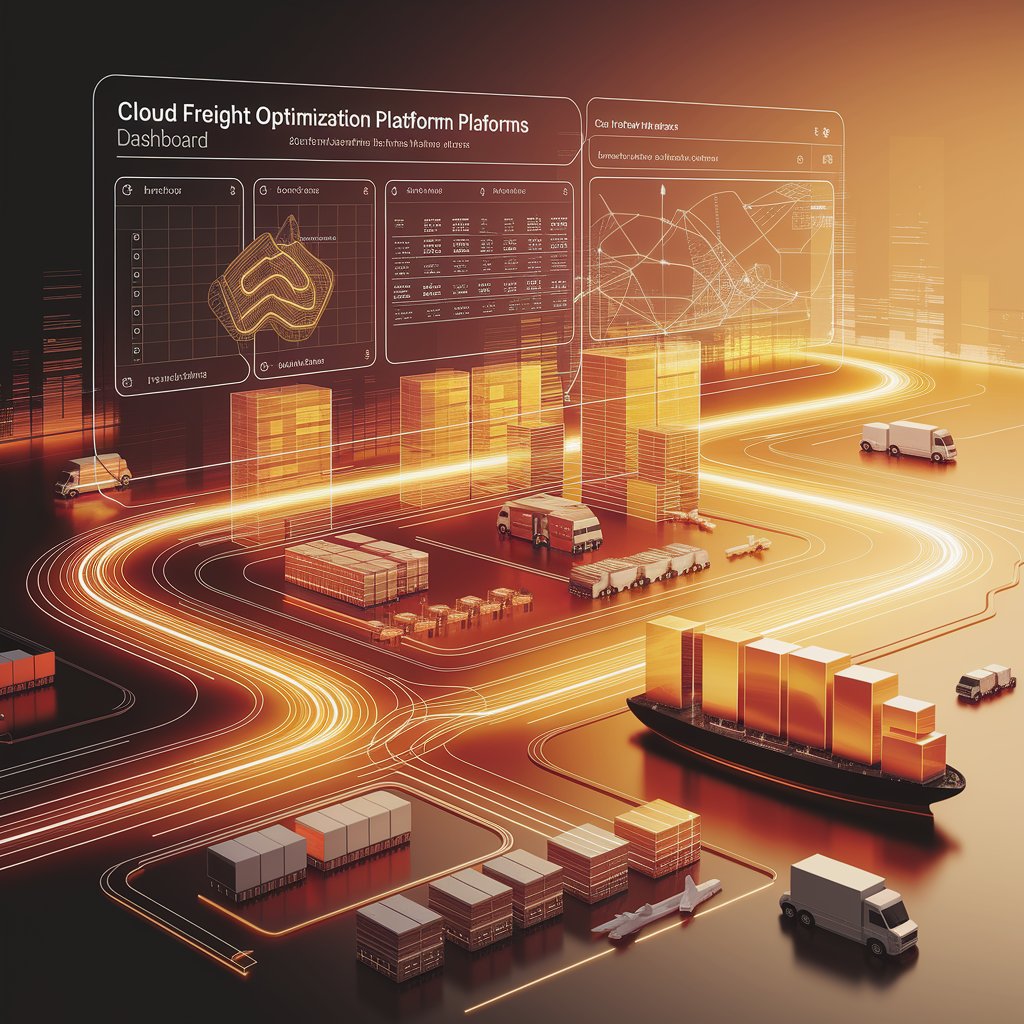Cloud Freight Optimization Platforms: Driving Smarter, Faster, and Greener Logistics

Introduction
That’s why more companies are adopting cloud freight optimization platforms. By leveraging AI, predictive analytics, and the scalability of the cloud, these platforms deliver smarter decision-making, real-time visibility, and optimized operations across the supply chain.
What Are Cloud Freight Optimization Platforms?
Cloud freight optimization platforms are digital systems hosted in the cloud that automate and optimize freight planning, execution, and monitoring. Unlike legacy on-premise systems, cloud platforms are scalable, accessible anywhere, and designed to integrate multiple logistics functions.
These platforms use machine learning and predictive analytics to match freight demand with carrier capacity, reduce costs, and adapt schedules in real time.

Key Features of Cloud Freight Optimization Platforms
- AI-Powered Optimization – Matches demand with available transport capacity.
- Real-Time Visibility – Provides end-to-end shipment tracking across modes.
- Dynamic Rescheduling – Adjusts routes and bookings as conditions change.
- Scenario Simulation – Tests different strategies for cost, speed, and sustainability.
- Integrated Dashboards – Unified KPIs for cost, capacity, and delivery performance.
- Cloud Scalability – Global accessibility without infrastructure limits.
Benefits of Cloud Freight Optimization Platforms 📈
- Cost Reduction – Optimize carrier selection, routes, and capacity use.
- Agility – Adapt instantly to demand fluctuations or disruptions.
- Efficiency Gains – Automate booking, routing, and monitoring tasks.
- Resilience – Anticipate risks and prepare contingency strategies.
- Global Collaboration – Cloud access for shippers, carriers, and partners worldwide.
- Sustainability – Optimize freight flows to reduce fuel consumption and emissions.

Real-World Applications
- Freight Forwarders – Secure capacity early while minimizing costs.
- Carriers – Align fleet schedules with predictive demand insights.
- E-commerce Logistics – Scale operations during peak seasons seamlessly.
- Cold Chain Providers – Plan and monitor sensitive shipments globally.
- Global Shippers – Integrate multi-region operations on a single cloud platform.
Challenges in Cloud Freight Optimization Platforms
- Data Integration – Fragmented ERP, TMS, and WMS reduce efficiency.
- Cybersecurity Risks – Sensitive freight data must be protected in the cloud.
- Connectivity Limitations – Requires stable internet access globally.
- Adoption Resistance – Some teams may prefer legacy systems.
- Initial Costs – Implementation and training require investment.

Best Practices for Success
- Unify Data Streams – Connect ERP, TMS, WMS, IoT, and GPS systems.
- Focus on High-Impact Routes – Apply optimization where cost savings are greatest.
- Leverage Predictive Analytics – Anticipate risks, delays, and demand shifts.
- Promote Collaboration – Involve carriers, shippers, and partners in platform use.
- Ensure Cybersecurity – Implement strict protocols for cloud data.
- Track ROI – Measure improvements in cost, speed, and service reliability.
The Future of Cloud Freight Optimization Platforms 🚀
- Autonomous Freight Engines – AI platforms booking and routing shipments automatically.
- Blockchain Integration – Secure, transparent freight contracts and payments.
- Digital Twin Freight Networks – Real-time simulations of entire supply chains.
- Edge AI for Local Optimization – Faster decisions at ports, hubs, and warehouses.
- Sustainability-First Freight Planning – Carbon efficiency as a core KPI.
Conclusion
Cloud freight optimization platforms are reshaping logistics by providing scalability, predictive intelligence, and global visibility. They enable freight forwarders, carriers, and shippers to reduce costs, strengthen resilience, and improve customer service—all while supporting sustainability goals.
For companies navigating the future of logistics, adopting cloud freight optimization platforms isn’t just a digital upgrade—it’s the foundation of a smarter, greener supply chain.
